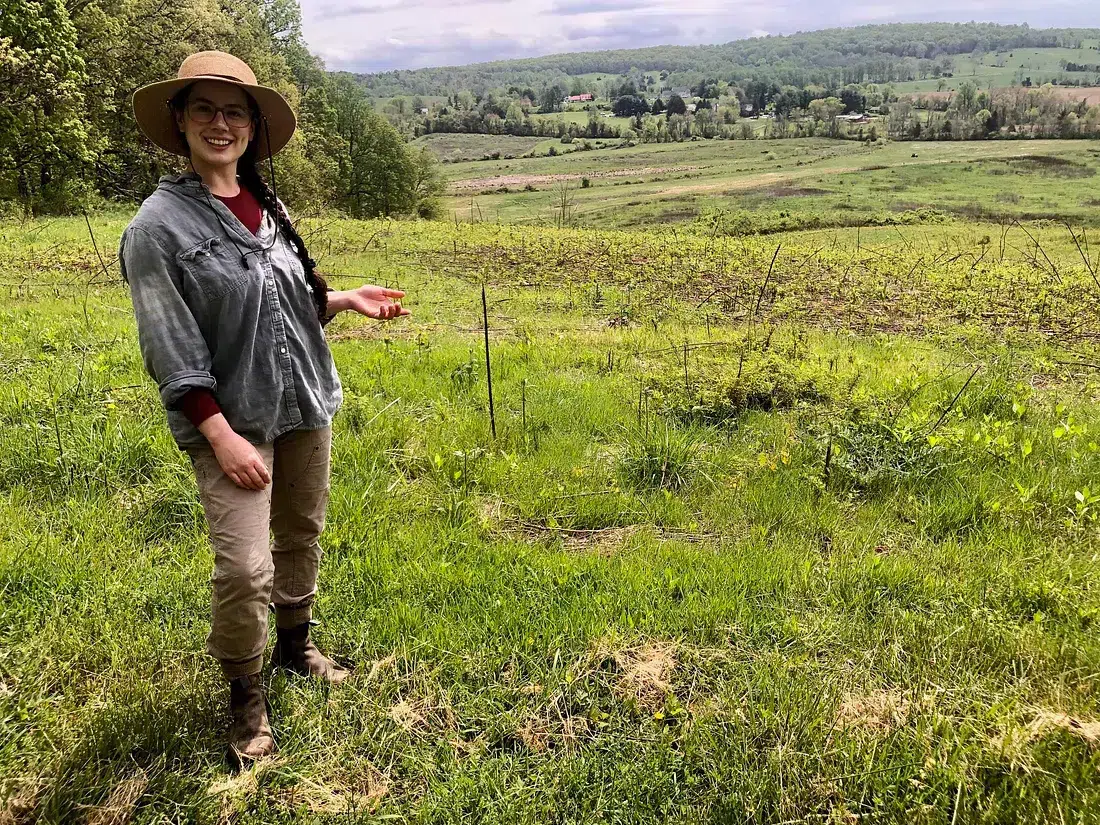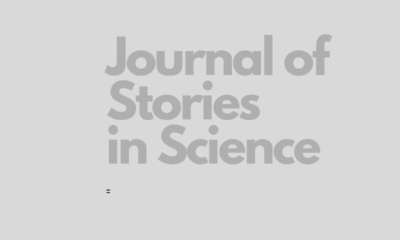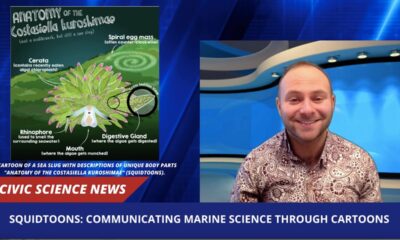Civic Science Times
Scientists invite the public to see — and hear — the upcoming eclipse

This coming Monday, April 8, 2024, hundreds of thousands of people in North America are planning to witness the total eclipse that will take place over a large swath of the continent.
As people take out their protective glasses to watch the phenomenon, scientists affiliated with Medford, Mass.-based Eclipse Soundscapes hope people will also pay very close attention to the sounds of wildlife they hear around them.
The Eclipse Soundscapes project is gearing up to analyze how animals respond during an eclipse, including whether a darkening of the sky will result in changes in animals’ behavior. But to do this successfully, project organizers are relying on hundreds of people to make and record observations about how wildlife behavior changes during the eclipse.
“Inviting the general public to help collect data allows us to reach a diverse collection of geographic areas, communities, and ecosystems that we would not otherwise be able to study,” Kelsey Perrett, Eclipse Soundscapes communications coordinator, told Civic Science Times. “Asking the public to participate in scientific exploration helps us affirm that science can be done by anybody, anywhere. And we hope collecting scientific data during the eclipse leads to a richer, more engaging eclipse experience for our participants.”
Civic Science Times
Virginia group encourages landowners to support local biodiversity

Virginia’s tourism motto is “Virginia is for Lovers.” But research groups seeking to persuade landowners to restore their properties to support local flora and fauna are guided by a modified motto: “Virginia is for LAND Lovers.”
Here’s why: It’s estimated that over 80 percent of land in Virginia is privately held. That means that landowners can have a significant role in creating habitats that support the growth of native plants and local wildlife.
“That’s a huge, huge amount of land,” said Kadiera Ingram, landowner outreach associate for The Clifton Institute, a nonprofit located on the outskirts of Warrenton, Virginia. The institute uses its 900-acre field station in Virginia’s Hunt Country to conduct research projects on ecology, biodiversity, and the restoration of local habitats. Clifton also has an education arm that seeks to inspire a deeper understanding and appreciation of nature.
Ingram’s role involves visiting local landowners’ properties for free, working with those landowners on their conservation interests and land management goals, and devising plans or offering advice on how they can restore their landscapes more naturally.
“We’ve got our state and federal agencies doing what they can on public land with the limited resources they have. But here—especially here in Northern Virginia—where folks have the land, have the motivation, and have the money, it’s really important to get folks to start adopting best land management practices,” Ingram said.
One of the research projects that Clifton is currently studying is looking at the best practices to restore former cow pastures and farmland into grasslands, keeping in mind that the grasslands could be Virginia’s Piedmont region, an area of river valleys between the Coastal Plain and the Blue Ridge Mountains, according to the Virginia Department of Wildlife Resources.
Clifton began this project in 2019, focusing on 110 acres of an overgrazed cow pasture on the property. Clifton hopes to use its research findings to help inform local landowners about how they can restore their land to support native plants and wildlife.
“There are a lot of people out here who have very large properties, and there’s a good amount of open pasture and grassland. So, that’s really our specialty: looking at grasslands,” Ingram said.
The evolving science of landscape restoration
Researchers in the U.S. Midwest have been studying grassland restoration for some time, but the science is relatively new for Virginia and Mid-Atlantic states, in part because Virginia is known more for its forests.
The science of landscape restoration “is still pretty young. A lot of really great questions are being asked and we’re finding out a lot of information,” Ingram said. But research findings in the Midwest aren’t always applicable to grasslands in the eastern U.S. or Virginia because of the environmental differences between the two regions.
The former cow pasture at Clifton has become an example of an early succession remnant prairie. Early successional and late successional habitats are typically grasslands or shrublands before they grow into woodlands and eventually forests.
The Virginia Department of Wildlife Resources defines early successional habitats as the plants “that develop in an area shortly after a disturbance. Succession is the process by which plant communities change in a certain area over time from an early stage of development until they reach a final mature form or ‘climax community.’” For much of Virginia, that final stage is the forest.

Clifton’s research on transitioning the former cow pasture to a native grassland involved these steps: First, using herbicides and repeated discing—which Clifton says is an organic alternative similar to plowing—to prepare the land. Once native plants were established, the land underwent mowing or prescribed burning. Clifton tested eight different combinations of land management methods to determine which set of methods enabled the best habitat for native plants and animals.
Executive director Bert Harris recently discussed Clifton’s findings with the Virginia Native Plant Society. Although fields with a history of intensive agriculture may never end up looking like remnant prairies, the findings will still be valuable for landowners and land managers, Harris said.
“You are probably never going to be able to recreate the remnant prairies by planting stuff in an agricultural field. These fields have been abused for decades. They’ve been plowed, and they have been transformed, probably permanently,” Harris said during the talk. “And so, it’s very important that we save the original remnants and manage them well because it’s going to be really hard to recreate them. But that does not mean it’s not worthwhile to do restoration. We’ve created a lot of pollinator habitat at Clifton, and a lot of landowners are creating excellent habitat.”

On a bright and warm Saturday morning in April, Ingram and I walked out to the field where the research has been taking place.
“We’re measuring plant diversity, like, what showed up. Are we getting more species, fewer species,” Ingram said. While Clifton is focusing its attention on plant species, it could turn its eye to insects and pollinators in the future.
“[We’re looking at] which species are coming in: If we’re getting a bunch of invasives, if we’re getting a rich diversity of native flowering plants.,” Ingram said. “The plants are at the basic trophic level, right? So if we’re doing a good job getting plants back and getting a nice, native, well-structured meadow, then everything else will do better—the birds, insects, and everything.”
What Clifton’s research means for local landowners
People who approach Clifton asking for help with land restoration have different goals, according to Ingram. Some want to do whatever it takes to support grassland birds and make a great habitat, while others might be seeking more of an aesthetic or they might have limited time and resources to work toward a full restoration.
Clifton works with all these landowners, Ingram said: “We find a way to bridge the gap and give them something that will benefit local native biodiversity while still giving achievable steps.” The group also provides a baseline set of recommendations or best management practices.
Clifton’s research is part of a broader initiative within Virginia and other Mid-Atlantic states to restore lands to a more natural habitat.
For instance, in neighboring Loudoun County, the Loudoun Wildlife Conservancy has partnered with the Audobon Society of Northern Virginia and others to create an initiative where volunteers visit property owners and managers “to become better stewards of nature in their own outdoor spaces.” The Wildlife Sanctuary Program initiative seeks to restore a site to its natural habitat and foster an appreciation for the native plants and wildlife that depend on that habitat.
All these programs seek to spread an interest in encouraging biodiversity on private property.
“These grasslands have come to support a lot of our native pollinators, bird species — a lot of our wildlife.” Restoring the grasslands ensures that the region doesn’t see a decline of the species that depend on this type of habitat, Ingram said.
by Joanna Marsh
Civic Science Times
Neuroscience and Society: Mapping Dana Foundation’s New Focus

What happens when an entrepreneur takes an interest in philanthropy? A multimillion-dollar grant funding institution is born. Established in 1950 in New York City by entrepreneur Charles Dana, the Dana Foundation started as a philanthropic institution that helped fund smaller independent colleges. Charles Dana looked for areas in society in which funding and grants would have the greatest impact, which, in addition to universities, included funding advancements in health. Charles Dana died in 1975; however, the Dana Foundation lived on, and its mission grew stronger. In the 1980’s the foundation shifted in focus to neuroscience, the study of the human brain. Over 40 years later, the mission of aiding neuroscience efforts has led to funding over 4 million dollars in grants in just 2022 alone.
The Dana Foundation’s current president and CEO, Dr. Caroline Montojo, “envisions a world where neuroscience reflects the aspirations of people from all walks of life and improves their life’s journey.” The Foundation’s primary effort is to bridge the gap between the public at large, including students, communities, and policymakers, and the scientific community of scholars, funders, and professionals. The Foundation maintains that collaboration and inclusivity are critical in ensuring that its mission, which it has named broadly neuroscience and society, is achieved.
How do they do this? In 2023, the Foundation finalized the objectives of its three grant programs: the Dana Frontiers, Dana NextGen, and Dana Education (see Figure 1).

Dana Frontiers supports neuroscientific collaboration with the diverse public including technology builders and users, policymakers, and clinicians following two objectives: (1) “develop engagement resources to cultivate trust and improve the quality of relationships between neuroscience practitioners, policymakers, and communities of people” and (2) “pilot innovative multidirectional engagement opportunities to embed community perspectives in research, policy, and decision-making.”
Since 2019, a total of 12 different grants have been awarded to researchers, journalists, institutions, and more through the Dana Frontiers Program. Previously funded initiatives under this program include a 2024 grant in support of the establishment of the Implantable Brain Computer Interface Collaborative Community (iBCI-CC) a diverse community of professionals researching and developing implantable BCI’s, a 2022 grant for a virtual event series hosted by Knowable Magazine titled “Inside the Brain: A Lifetime of Change” which explored human development from birth to death bringing together the general public and neurodevelopmental experts and policymakers, and a 2019 grant awarded to the National Academy of Sciences to support judges through education materials and workshops when considering scientific evidence in their trials.
On the other hand, Dana NextGen supports neuroscience students and early professionals following three objectives: (1) “integrate societal concerns into neuroscience training … through experiential learning and innovative curricula,” (2) “support workforce development in academic and non-academic career tracks” focused on neuroscience and society, and (3) “encourage rigorous, collaborative, and cross-disciplinary work between neuroscience and non-science disciplines.”
Through the Dana NextGen program, a total of 19 different grants have been awarded since 2019. Some of the grants include a 2023 grant to the Center of Bioethics at Harvard to create the Dana Foundation Career Network in Neuroscience and Society, a 2022 grant to BrainMind, a non-profit group working to increase neuroscientific research that benefits humanity, to host their first conference, the BrainMind Neuroethics Conference, and a 2023 grant to the Leadership Alliance at Brown University and Johns Hopkins University which provides professional development workshop to university undergraduates.
Lastly, the Dana Education program supports the formal and informal education of neuroscience to all people following three objectives: (1) to support the informal education “of neuroscience and its connection to society” 2) to “engage K-12 students in learning about neuroscience and its relevance to society” and (3) to “facilitate greater understanding and informed decision-making among professionals by supporting new education approaches.”
A total of 17 different grants have been awarded under the Education program since 2019 including a 2022 grant to the Franklin Institute to update their neuroscience and society high school curriculum providing interactive neuroscience-focused activities to high school students. The update allowed for the curriculum to move to an online format, making it easier for the Franklin Institute to disseminate its knowledge base to a wider variety of schools, students, and teachers, including those with fewer resources. Other grants awarded under the Education program include a 2023 grant to the American Association for the Advancement of Science (AAAS) in support of their neuroscience seminar series for judicial figures including judges, and a 2019 grant to PBS Television Station WETA in support of the production of their documentary, “Hiding in Plain Sight: Our Mental Health Crisis.”
The Dana Foundation has funded many diverse programs and projects through its three grant programs. However, the mission of strengthening the connections between neuroscience and society is not limited to the Dana Foundation. For example, the National Science Foundation has a grant program called Advancing Informal STEM Learning (AISL) which funds both research and implementation projects of informal learning experiences in support of STEM education that include neuroscience. Considering Dana Foundation’s neuroscience and society funding programs and others like it, several questions are important to consider. For example, how are funders measuring the impact of grants in this space? How are funders working with grant recipients to ensure successful projects that were funded continue after the funding ends? Additionally, how are funders sharing the lessons learned from their grantees? For example, could all funders have a public database (like this one) with searchable final reports of their funded projects so that researchers, practitioners, and policymakers can use the lessons learned to advance other related work?
Ultimately, tracking grant funding will be an important element in mapping the allocation of resources supporting the ecosystem of projects at the intersection between neuroscience and society. We will keep tracking this progress as new developments emerge.
by Bernadette Weigman, Neuroscience & Society Correspondent, Civic Science Media Lab
·
Civic Science Times
From Scroll to Success: Exploring the Role of Science Communicators in Ozempic’s TikTok Triumph

In the past year, you can’t open any form of media without hearing about Ozempic — the “magic” weight loss drug initially approved for diabetes. Ozempic is polarizing to say the least. Some people are obsessed with it and praise its use from the rooftops. Others are angered that this drug is being advertised as a magical diet pill. Either way, the cultural impact, financial success, and scientific innovation of ozempic cannot be denied.
Ozempic was originally approved by the FDA in 2017 for patients with diabetes. In 2021, a similar drug called Wegovy was approved for weight loss. The popularity of these drugs skyrocketed so much that they are on the FDA shortage list. But how exactly did this happen and what are the implications of Ozempic’s success on researchers and science communicators? The success of Ozempic lies at the intersection of diet culture, celebrity influence, social media, and scientific innovation.
Read more on the Civic Science Times
-

 CivicSciTV2 months ago
CivicSciTV2 months agoWhy public engagement is, and always has been and always will be, critical for science
-

 Civic Science Times4 months ago
Civic Science Times4 months agoOpinion: The growing imperative for civic science journalism
-

 CivicSciTV4 months ago
CivicSciTV4 months agoIn the path of totality, poems on citizen science, & civic science fellowships! CivicSciTV News 1/15
-

 Civic Science Times3 months ago
Civic Science Times3 months agoLiving Proof: An example of when civic science enters the beauty world
-

 CivicSciTV5 months ago
CivicSciTV5 months agoColleen Kelley’s mission is to build molecular literacy through imaginative chemistry comic books
-

 People3 years ago
People3 years agoMy Career Path Following Water from the Mountain to the Sea and Across an Ocean
-

 Science Policy5 months ago
Science Policy5 months agoEmily Edwards: Public should have a front-row seat to the development of quantum science.
-

 CivicSciTV2 months ago
CivicSciTV2 months agoMaking science engagement fun, humor, science cartoons & SciTalk 2024! CivicSciTV News (Mar. 4)




